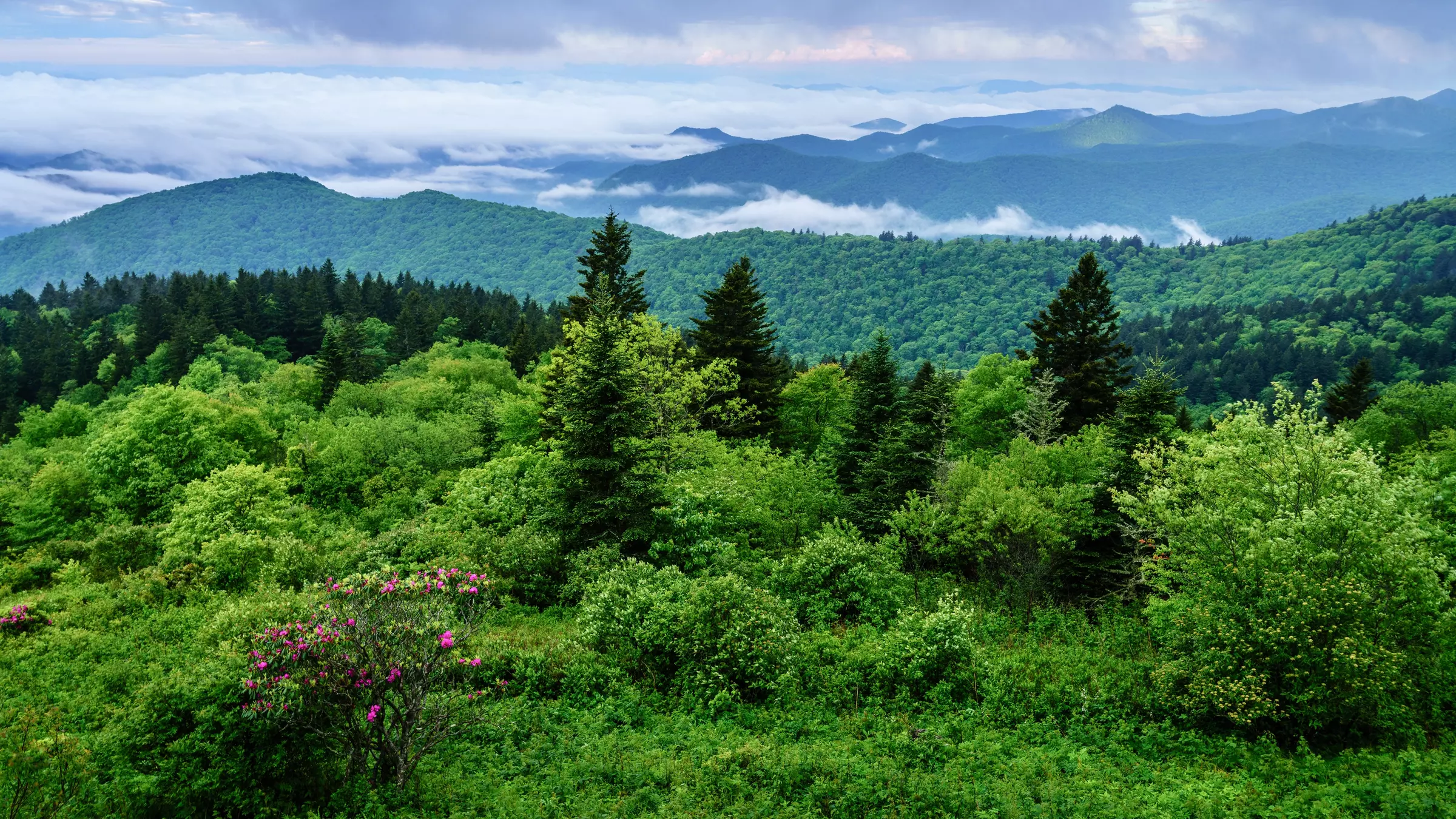Prepare For All Conditions
You should be prepared for a wide range of temperatures and conditions. The temperature on some hiking trails can be 10 degrees cooler than when you left the lower elevation. Combine this with the fact that the Smokies are also the wettest place in the South, and you have the possibility of great discomfort in the event of a sudden storm. The higher elevations in the park can receive upwards of 90 inches of precipitation a year!
Also, don’t make the mistake of judging the entire day’s weather by the morning sky. Especially in summer, the days usually start out clear, but as the day heats up, clouds can build up, resulting in a heavy shower. Winter can be a great time to be in the Smoky Mountains, as it’s usually less crowded; however, it can be unpredictable due to potential snowfall and seasonal road closures. Spring and fall are perhaps the most beautiful times of year to hike, with an abundance of blooming wildflowers or bright autumn foliage, but pop-up showers are definitely a possibility regardless of the season, so be sure to keep an eye on the radar and plan accordingly. Learn more about some of the best hiking trails in the Smoky Mountains!

Practice Hiking Safety
Proper footwear is a must! Though tennis shoes may be generally appropriate for some short, easy hikes, hiking boots should be worn on most trails due to uneven ground, steep inclines, and rocky areas. As mentioned previously, the Smokies get a lot of rain, so always bring rain gear, at least a light jacket.
Try to hike with another person, or at least tell someone where you’re going if you intend to hike alone. Stay on the designated trail; most hikers get lost when they leave the path. Trail maps are available at visitor centers, or you can download free maps for popular hikes here.
When asked about how to react to meeting a bear on the trail, a Park Ranger smilingly said the most likely sighting of a bear would be its tail disappearing over a ridge. Most incidents occur when an ignorant visitor feeds or otherwise harasses a bear. Because bear sightings are becoming more and more frequent, especially in areas such as Cades Cove, it’s imperative that visitors to the national park continue to leave no trace, never feed a bear, and not get too close to one, especially a cub, since the mother could become angry and violent.
Cross streams carefully. Getting wet, even during the warmer months, could lead to hypothermia, which ultimately results in disorientation, poor decision-making, and, in extreme circumstances, death. Having said that, don’t let a fear of hypothermia, getting lost, or bears prevent you from the enjoyment to be had by hiking in the Smokies! Common sense goes a long way!

Plan Your Hiking Trip With Care
With a little care and planning, your hiking trip can be rewarding and full of fantastic memories. To avoid crowds, hike during the week; avoid holidays and visit during the off-season instead. Also, go in the morning before most folks are through eating breakfast; plus, this is a good time to see wildlife, and morning light is great for photography! You can also avoid crowds by hiking lesser-known trails, such as Roundtop, Schoolhouse Gap, Curry Mountain Trail, Grapeyard Ridge, and Spruce Flat Falls.











